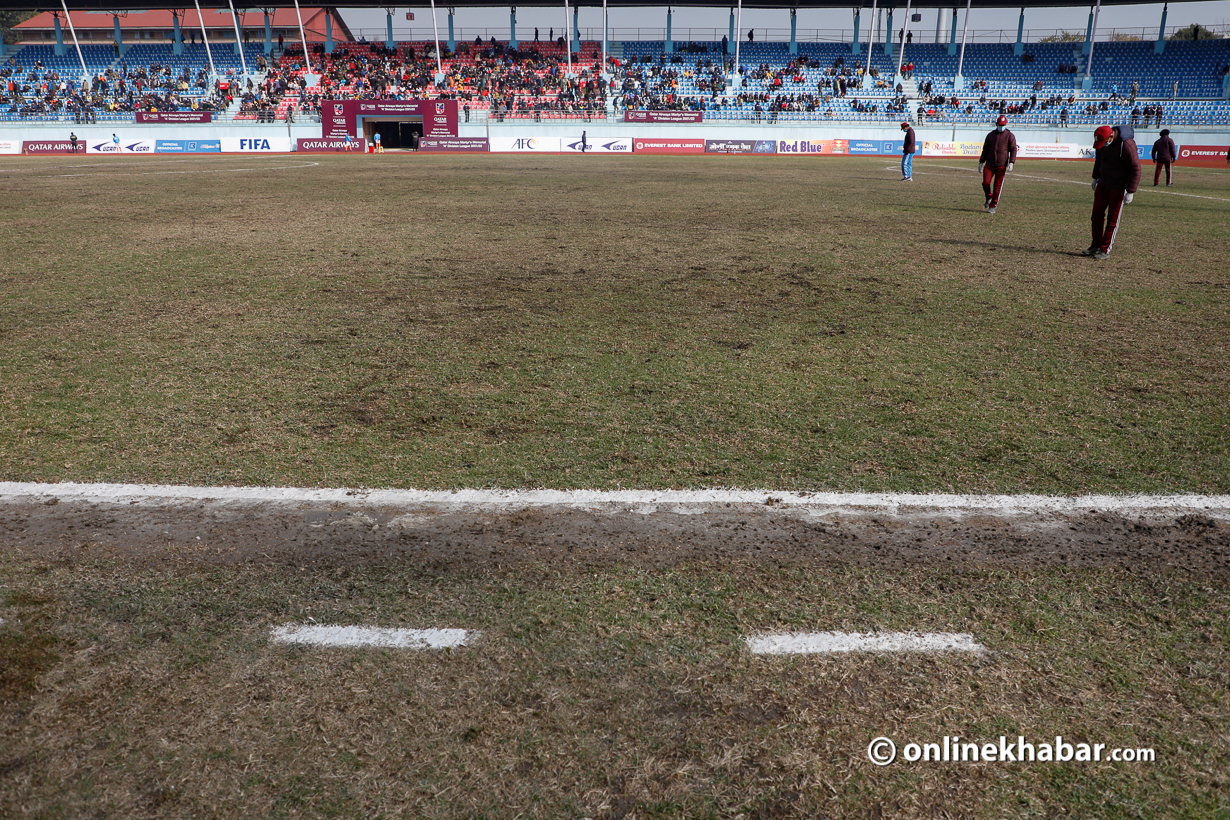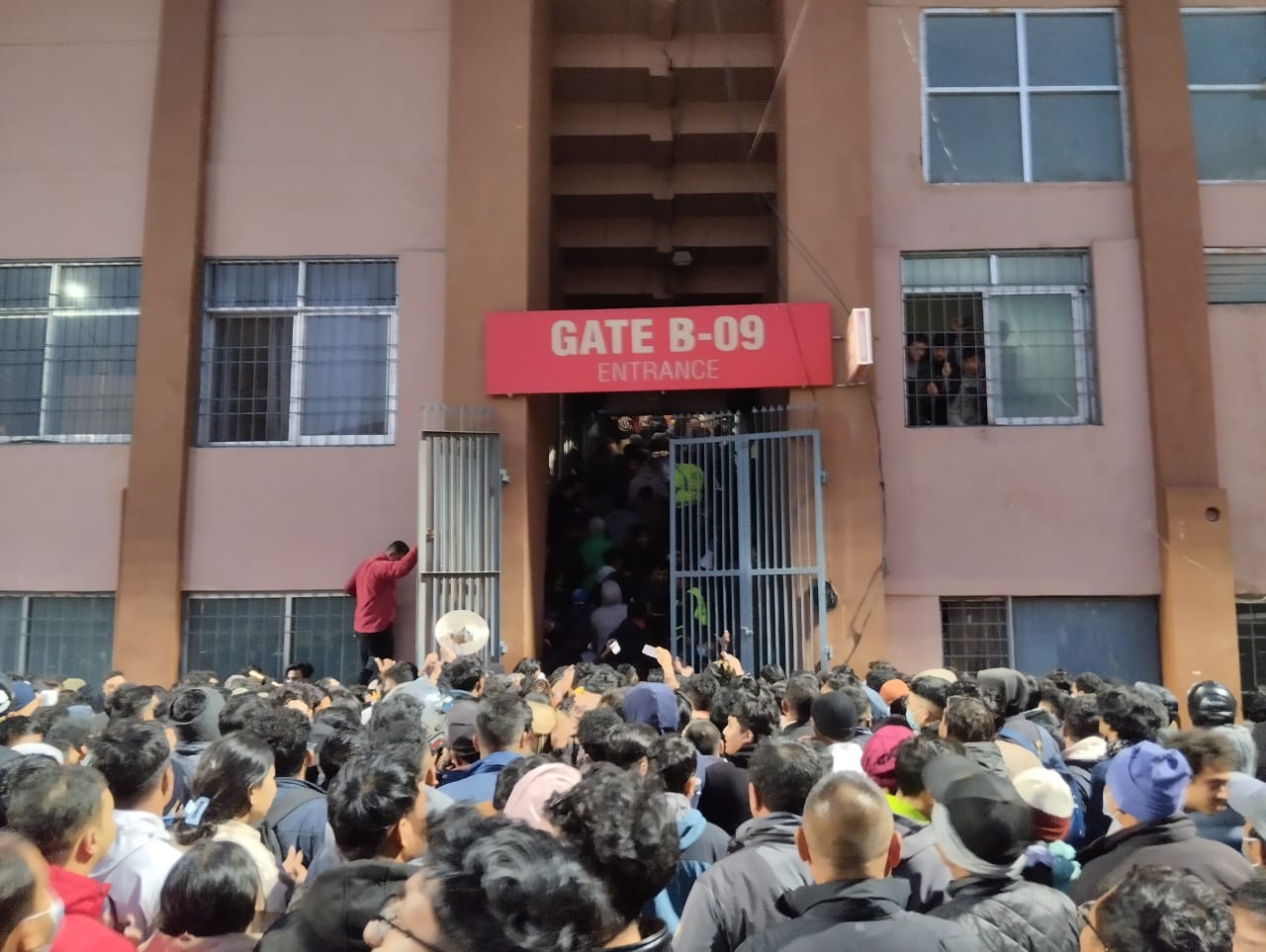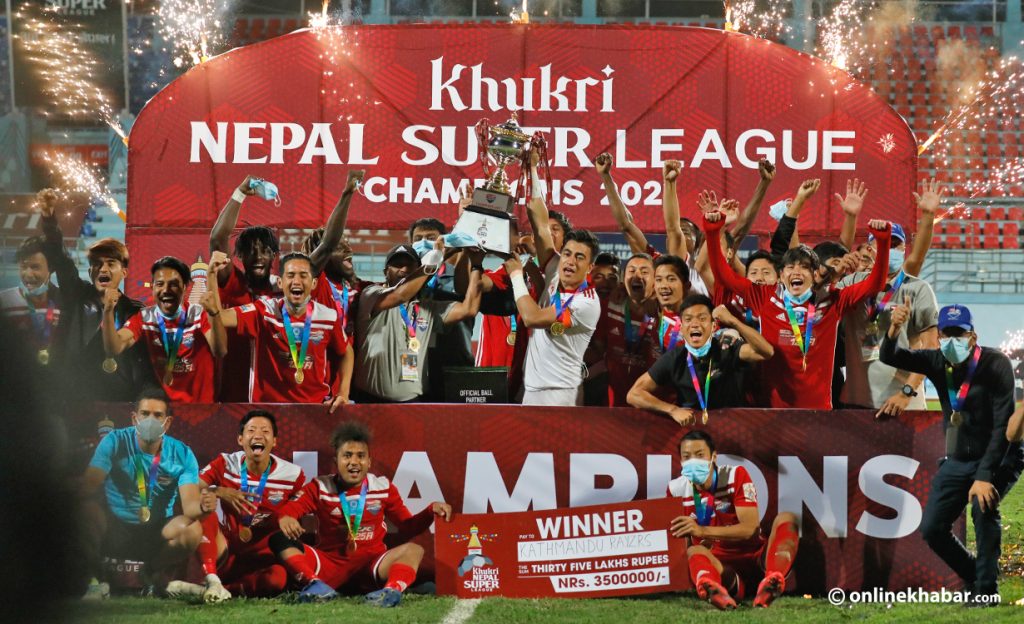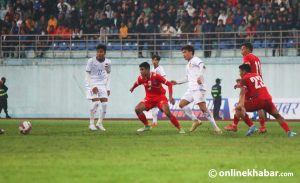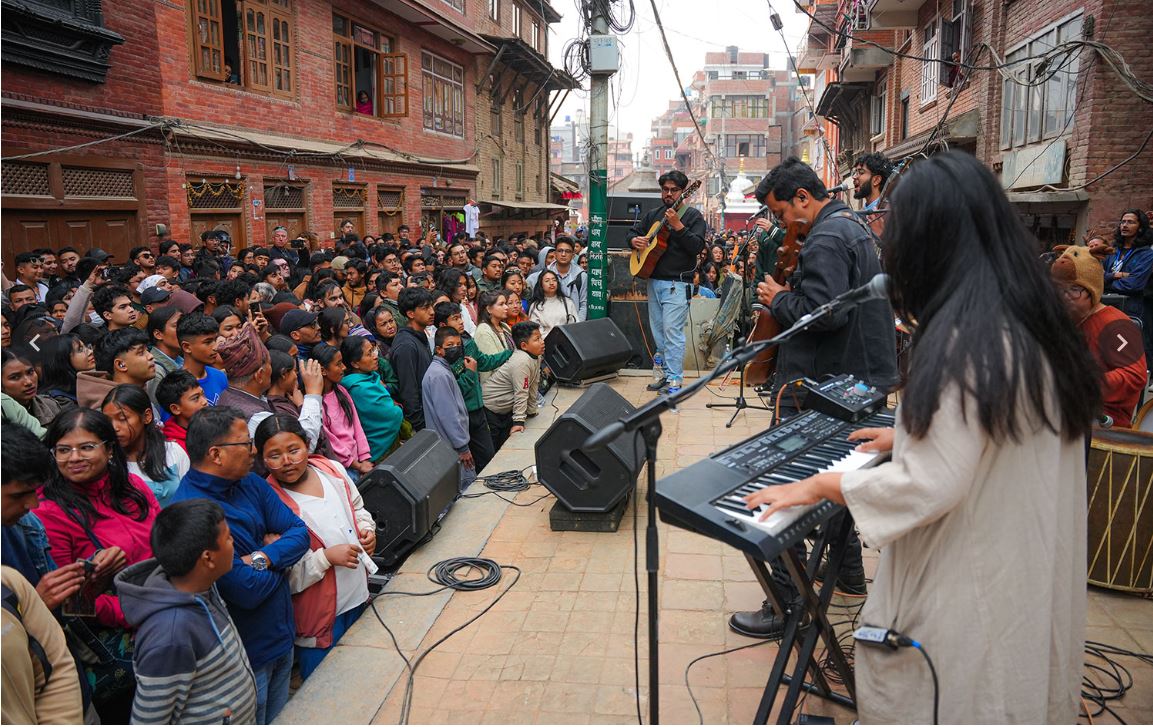On a cold winter morning, Surendra Rai along with three others are at the Dasharath Stadium watering the ground that over the past week has held five A-Division League matches.
As it is winter, there is hardly any grass in the field which also needs patching up from the battering it has taken over the course of the past week. The workers usually have three days to make the ground ready for another round of fixtures and they know that they will need to work round the clock to ensure that the pitch is safe for playing.
“It’s hard honest work,” says Rai. “We don’t have enough human resources, but we do what we can do because as they say, the show must go on.”
Dasharath Stadium is the country’s only international stadium that can host a football game, but its state is quite bad. While the stadium did receive a makeover after the 2015 earthquake, the ground is still the same as it was over two decades ago.
What are the problems?
In September 2021, Nepal hosted India in two friendly matches, after which Indian football analysts and their coach criticised the pitch for being too slow. They said the wobbly pitch of Dasharath Stadium was not fit enough to host international football matches as it raised the risk of the players being injured. But, why is this the case? Who is responsible for the state of the ground? Well, the answer to this question is not simple.
The stadium was built in 1956 and has had some renovation from time to time. Its first renovation came in 1998 just before Nepal was due to host the South Asian Games in 1999. That was when the football pitch was changed too and since then, it has hosted various football matches, concerts and other events. Since then, the stadium has been renovated a few more times, but the pitch has not and that players and other stakeholders say is wrong on many levels.
“When we played in Kuwait, it felt odd playing on such a good surface. It took us time to get acquainted with the surface because the ones here are so bad,” a national team player told Onlinekhabar on the condition of anonymity.
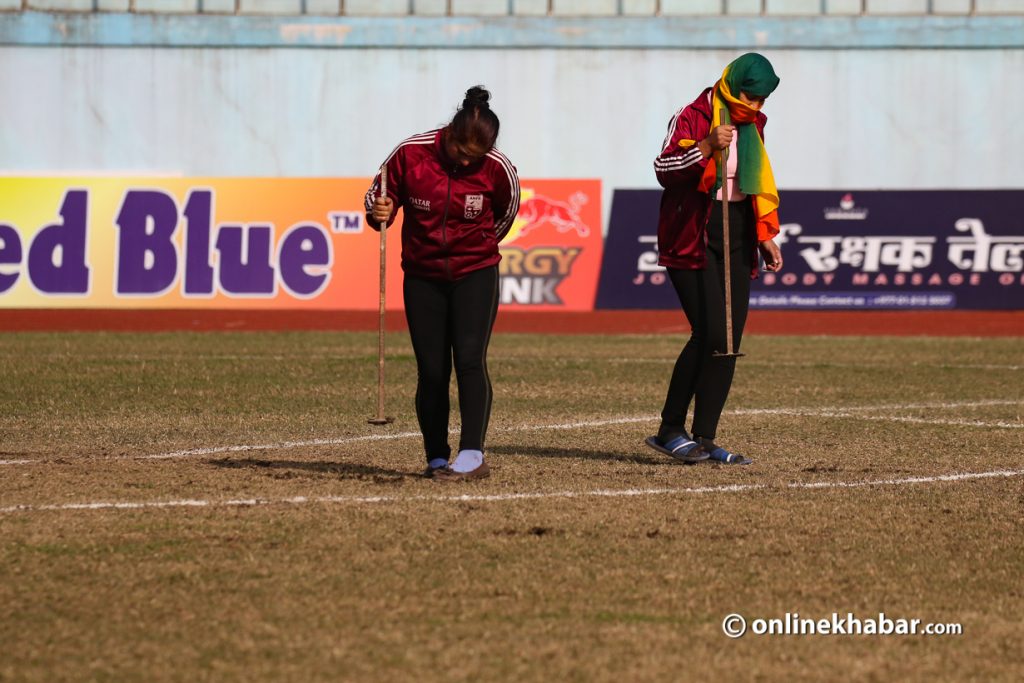
Even coaches from football clubs have started to raise questions regarding the pitch. After Himalayan Sherpa beat Satdobato Youth Club, Yug Kishore Rai, Sherpa’s coach, criticised the Dasharath Stadium pitch stating that it was not up to standard.
“The pitch is horrible. We can’t be expected to play good football on such a pitch,” he said. “We need to look at playing games in other grounds too, conducting five games a week on the same pitch because all clubs have invested a lot of money on players and we don’t want them to get hurt.”
As the grass density is low, the ground staff cannot even water the ground as much as they want to. That results in the performance of players.
They also do not have the proper equipment to maintain the pitch nor do they have the skills required. What is worse is the Dasharath Stadium ground only has two permanent staff members, out of whom only one, Dilip Rajak, the head ground staffer, is trained in skills for ground management.
Onlinekhabar’s repeated attempts to meet or talk to Rajak were unsuccessful.
Who is responsible?
Everyone involved in football in Nepal knows that the turf at Dasharath Stadium needs to be replaced. Even though there have been talks of replacing the old turf, not much has been done. While the turf was okay two decades ago, in today’s age, the turf is as bad as it can get.
“It needs replacing and we’ve been talking to ANFA (All Nepal Football Association) and NSC (National Sports Council) about this, but there have been no inroads yet,” says Rai.
He says the staff are doing everything in their power to ensure that the field is good enough to play on, but external forces make it hard for them to work smoothly.
“The NSC rents out the field for different purposes which makes it hard for us to manage it,” says Rai.
He says the ground was in good shape until the match against India. Even though it was wobbly, the ground had a lot of grass. But, post the two friendlies, the NSC rented out the ground for the Mayor Cup Veterans’ Football Tournament, which held around four games a day for a week.
“That ruined the ground,” says Rai.
Who shall fix it?
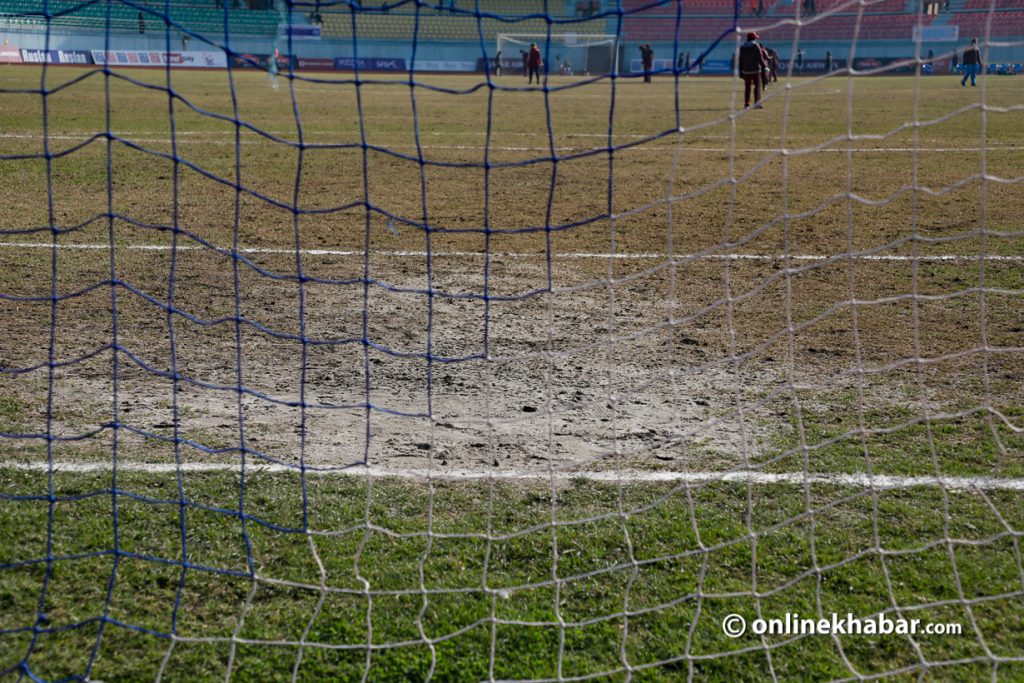
The Dasharath Stadium ground is not owned by the Nepali football governing body ANFA and that makes it tricky. If ANFA wants the ground, it has to ask the Nationals Sports Council for permission. While the NSC says it has tried its best to keep the ground playable, it is clear that it needs to do more.
“We want to ensure that the ground is good, but with so many games we can’t do what we want,” says Kul Bahadur Thapa, the NSC’s spokesperson. “It’s winter and with five matches taking place every week, it’s obvious that the ground looks bad.”
He says the council had repaired the Dasharath Stadium pitch during the 2019 South Asian Games and says the ground is okay and does not need to be replaced.
“The ground is fine, if it wasn’t, we wouldn’t be able to host the South Asian Games there,” he says.



